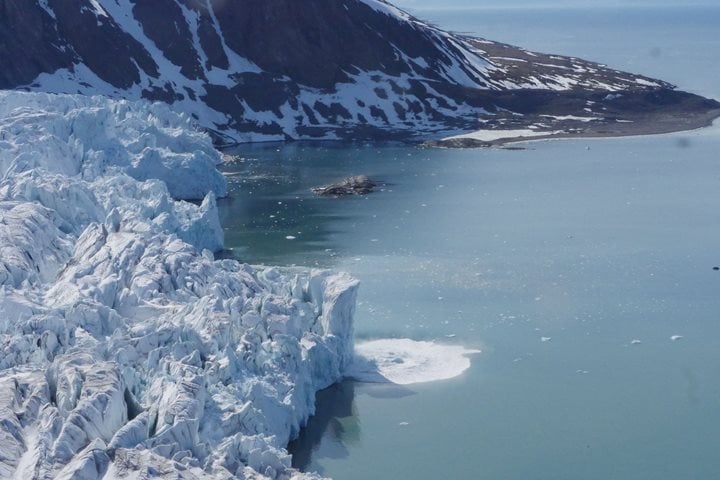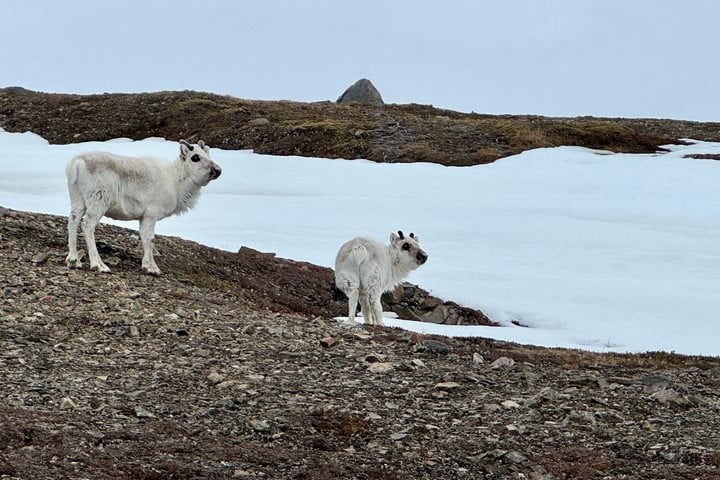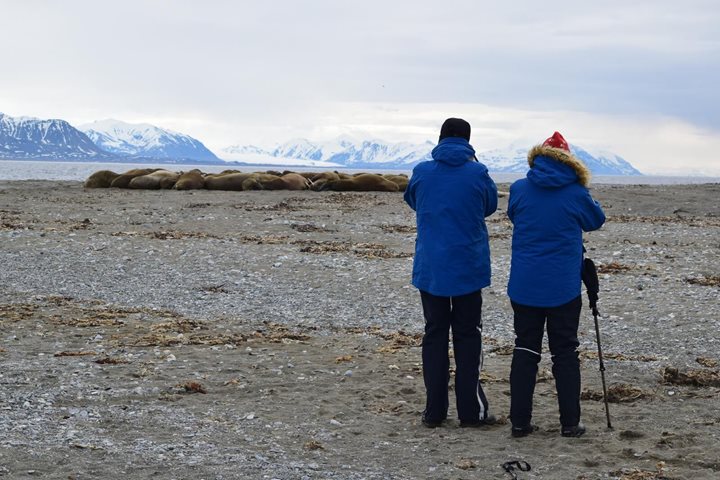At 0600 there were calm seas with a temperature of 45 degrees to start the day. Our ship entered the deep fjord system of Krossfjorden. The view this morning is spectacular, with high jagged peaks surrounding us and large glacial tongues visible in all directions. It became clear for us why the Dutch explorer and captain, William Barents, in 1596 named this Island Spitsbergen, or “land of jagged peaks.”
Our expedition leader decided to start our morning activities in the small branch of the fjord called Lilliehook Fjorden. We witnessed one of the most spectacular glacier fronts in Svalbard spanning 1.7 miles from port to starboard. This scene had beckoned many a photographer to the decks, trying to capture this breathtaking scenery.
With the perfect weather conditions we took advantage of the situation and offered hiking ashore, kayaking in the protected bays and Zodiac cruises along the rugged coastline. One distinctive feature of this site is the towering cliffs covered in breeding Bunnich’s guillemots and kittiwakes as well as the carpet of lush moss and flowering plants benefiting from the abundant nutrients raining down from the cliffs above.
Kayakers enjoyed spectacular peaceful paddling among spread out glacier ice or just drifted quietly listening to the commotion of thousands of seabirds. Hikers ashore enjoyed the dense tundra terrain, rolling landscape and exploring the remains of a German World War II weather station. Signs of Svalbard reindeer in the forms of their massive shed antlers, nesting red-throated divers (loons) on a small lake, Arctic terns defending their nesting territory, and many species of flowering plants. This would be our last landing for this expedition and a fitting conclusion to such a highlight-rich experience in Svalbard.







